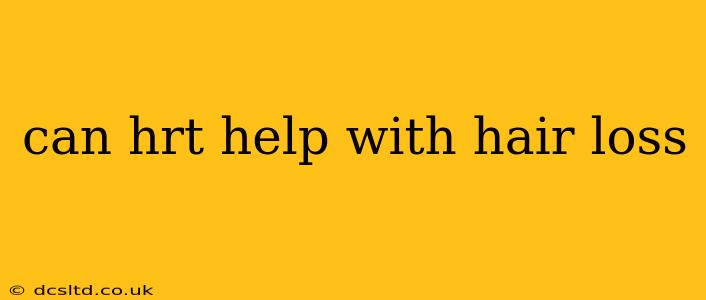Hair loss, or alopecia, is a distressing condition affecting millions. While various factors contribute to hair thinning and shedding, hormonal imbalances often play a significant role. Hormone Replacement Therapy (HRT) aims to restore hormonal balance, leading many to question its efficacy in combating hair loss. Let's explore this complex relationship.
What is Hormone Replacement Therapy (HRT)?
HRT is a medical treatment that replaces hormones lost due to aging or medical conditions like menopause or surgical removal of the ovaries. For women, this typically involves estrogen and progesterone, while men's HRT might include testosterone. The specific hormones used and dosages depend on individual needs and medical history. It's crucial to remember that HRT is prescribed by a doctor and should never be self-initiated.
Can HRT Help with Hair Loss in Women?
In women, hair loss is often linked to fluctuating estrogen and progesterone levels, particularly during menopause. Estrogen plays a vital role in maintaining the hair growth cycle. As estrogen levels decline, hair follicles can miniaturize, resulting in thinner, shorter hairs and eventual hair loss. HRT can sometimes help mitigate this by restoring estrogen levels, potentially stimulating hair regrowth. However, the impact varies significantly among individuals. While some women experience improved hair growth with HRT, others don't see any noticeable change.
Does HRT cause hair growth or just stop hair loss?
HRT doesn't necessarily cause new hair growth in the sense of creating entirely new follicles. Instead, it primarily aims to stabilize the existing hair growth cycle and prevent further miniaturization of follicles, potentially leading to less shedding and a thicker appearance of the hair.
Can HRT Help with Hair Loss in Men?
For men experiencing androgenetic alopecia (male pattern baldness), testosterone plays a complex role. While testosterone is necessary for hair growth, its conversion to dihydrotestosterone (DHT) can shrink hair follicles and cause hair loss. Although testosterone replacement therapy is sometimes used for low testosterone, it doesn't directly address the DHT-related aspects of male pattern baldness. In fact, in some men, increased testosterone can worsen hair loss. Therefore, HRT for men is generally not considered a primary treatment for hair loss.
What are the side effects of HRT?
HRT, while beneficial for some, carries potential side effects that vary among individuals. These can include:
- Increased risk of blood clots: A higher risk of developing blood clots, particularly in the legs or lungs.
- Breast tenderness: Tenderness or swelling in the breasts.
- Headaches: Increased frequency or severity of headaches.
- Weight changes: Weight gain or loss.
It's crucial to discuss potential side effects with your doctor before starting HRT.
What other treatments are available for hair loss?
Besides HRT, various treatments for hair loss are available, including:
- Minoxidil (Rogaine): A topical medication that stimulates hair growth.
- Finasteride (Propecia): An oral medication that blocks DHT and is effective for male pattern baldness.
- Hair transplantation: A surgical procedure to transplant hair follicles from one area of the scalp to another.
- Low-level laser therapy (LLLT): A non-invasive treatment that uses low-level lasers to stimulate hair growth.
Is HRT the right treatment for my hair loss?
The decision to pursue HRT for hair loss is highly individualized. It's crucial to consult a healthcare professional, such as a dermatologist or endocrinologist, to determine the underlying cause of your hair loss and discuss whether HRT is an appropriate treatment option for you. They can consider your medical history, hormonal levels, and other factors to create a personalized treatment plan. Remember, HRT is not a guaranteed solution for hair loss and may not be suitable for everyone.
